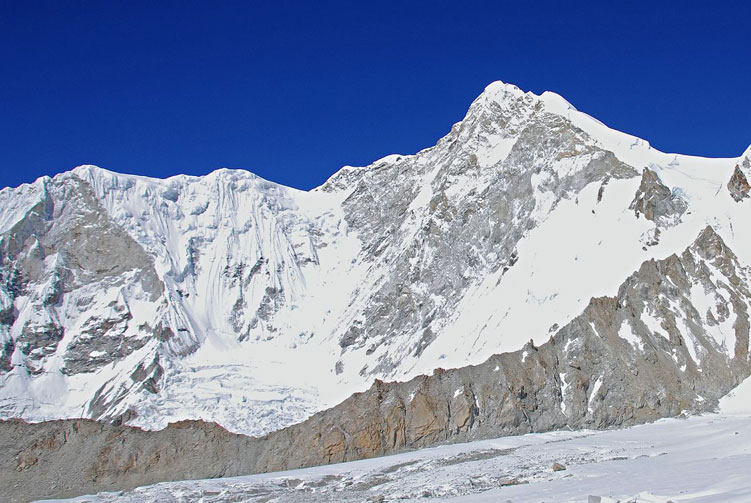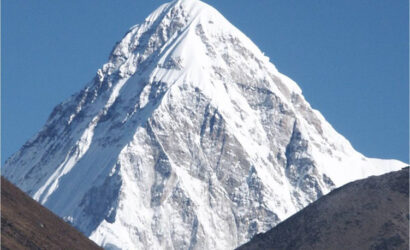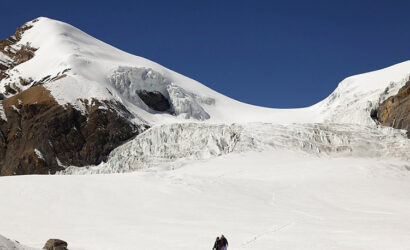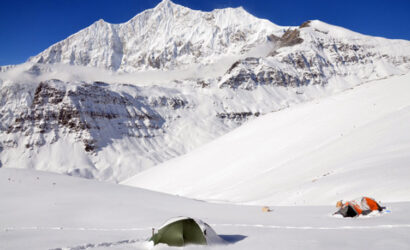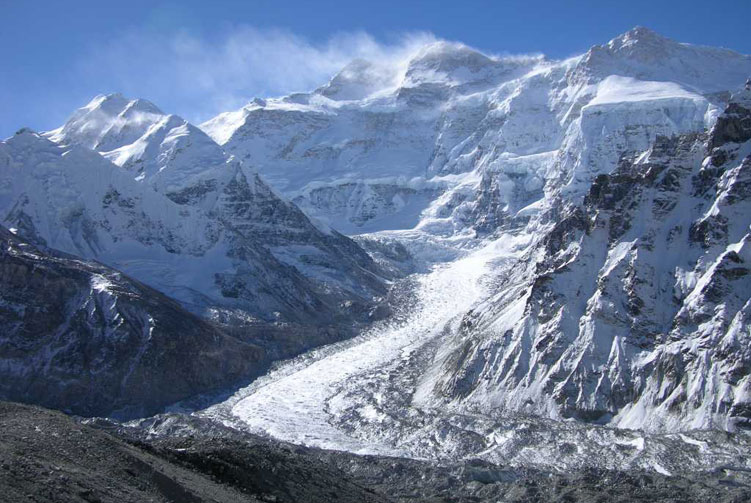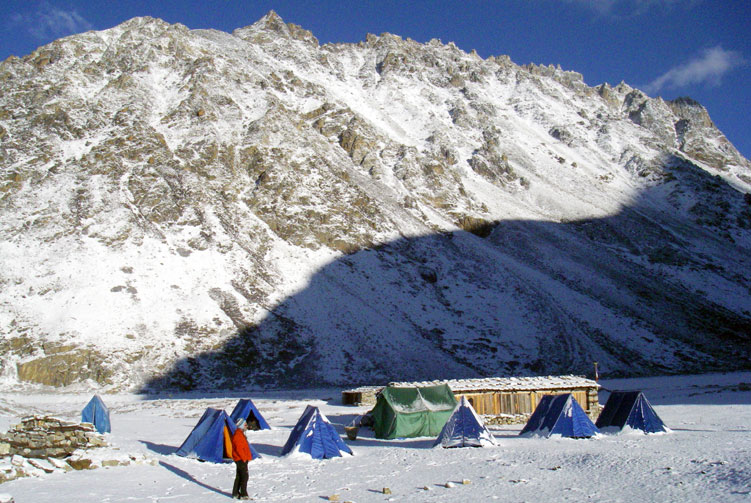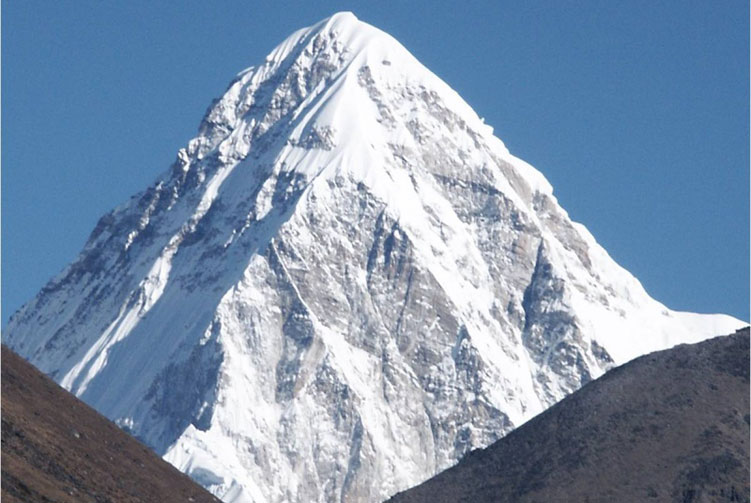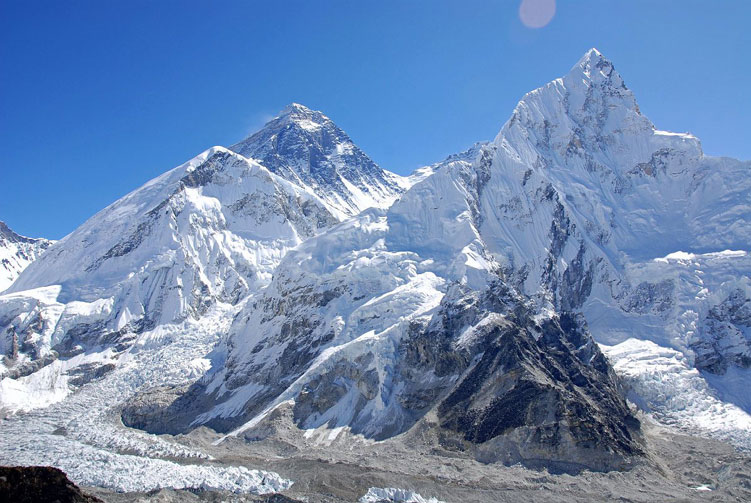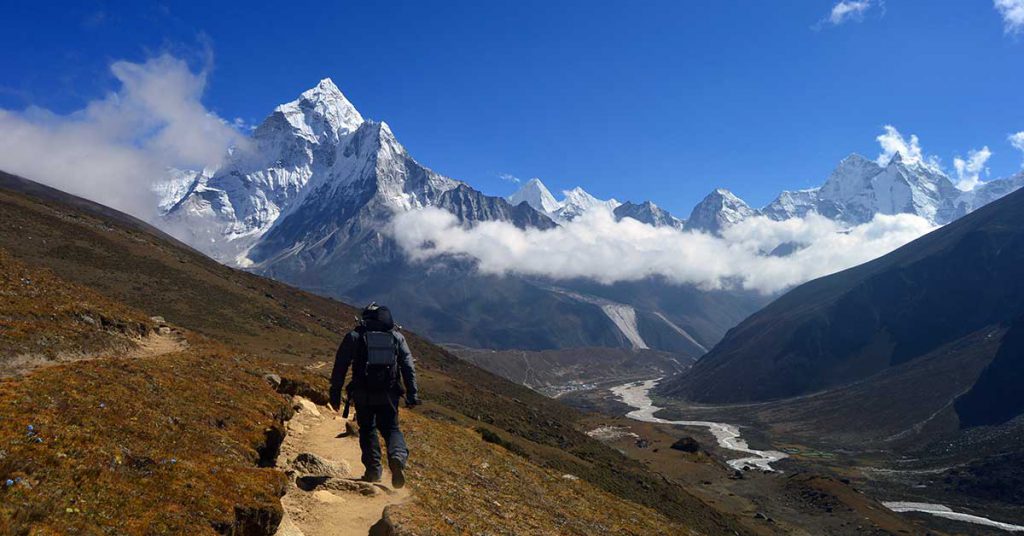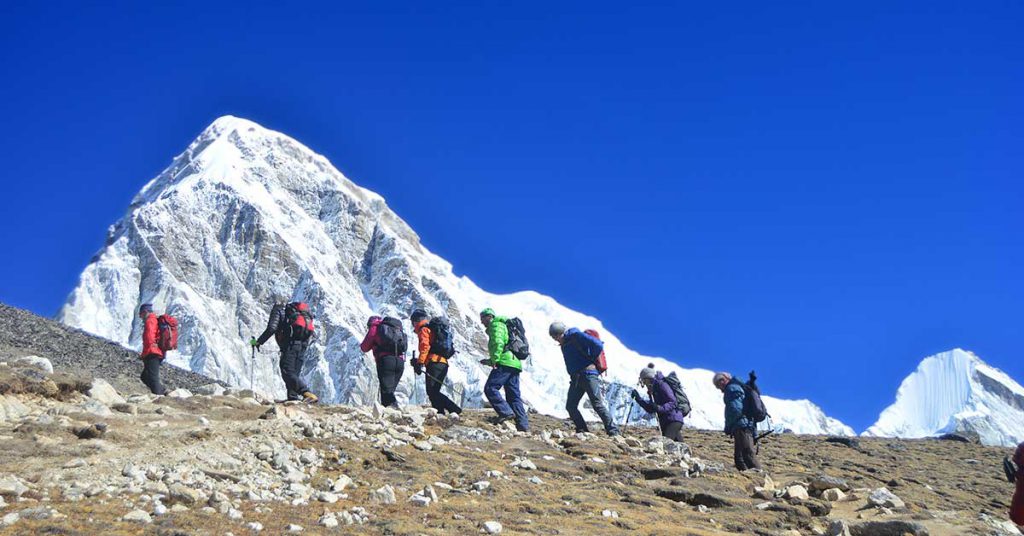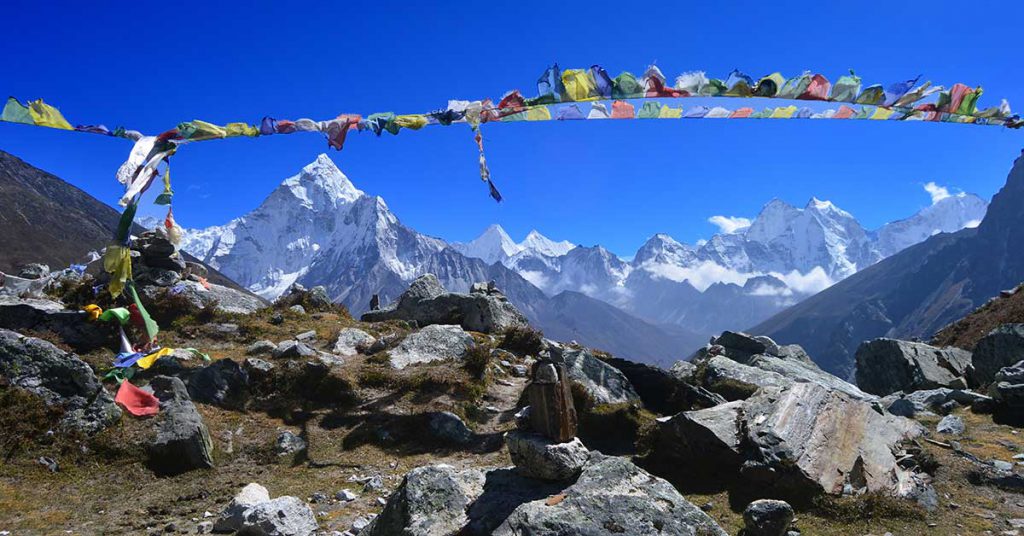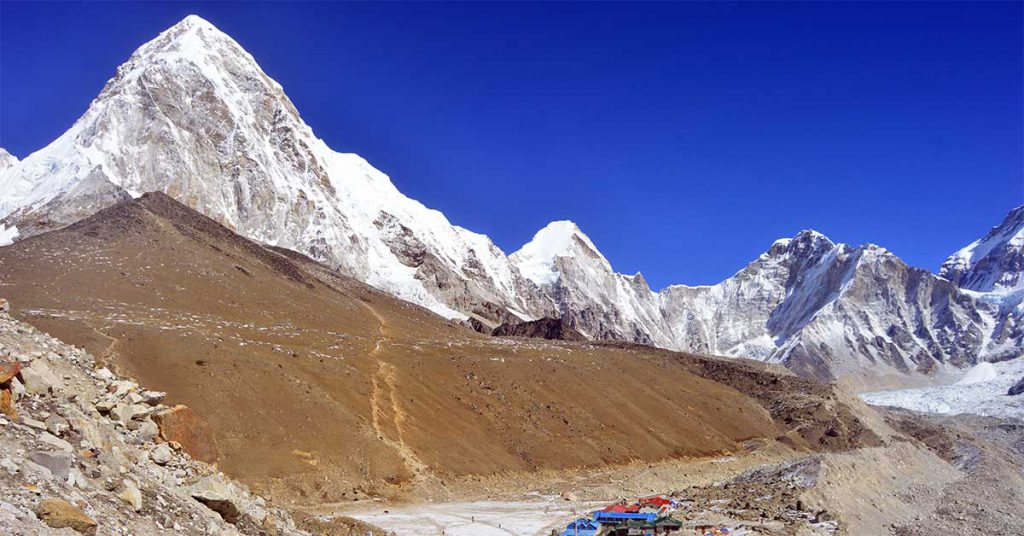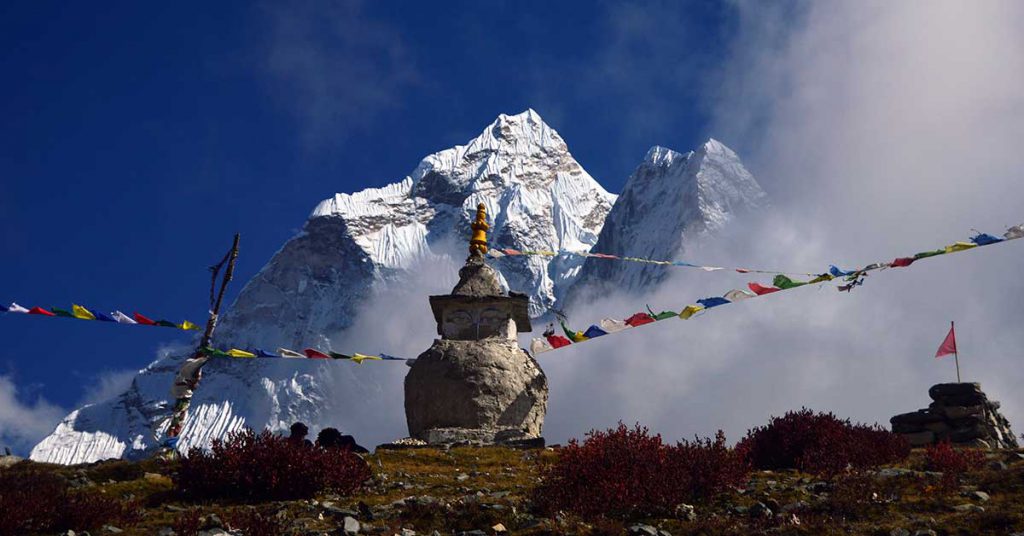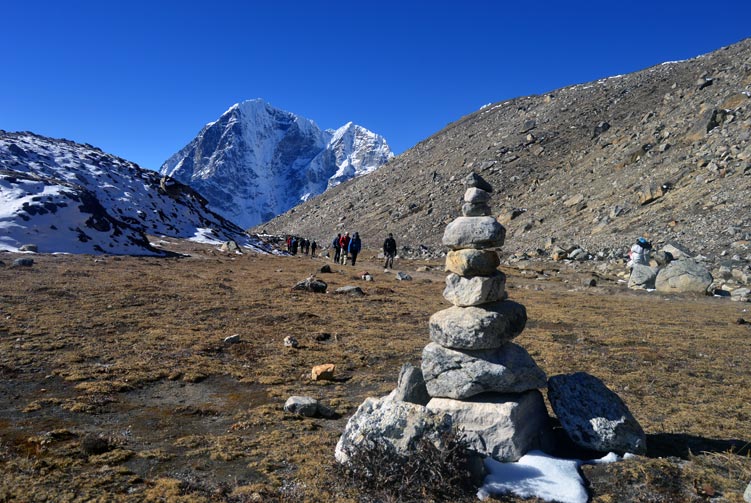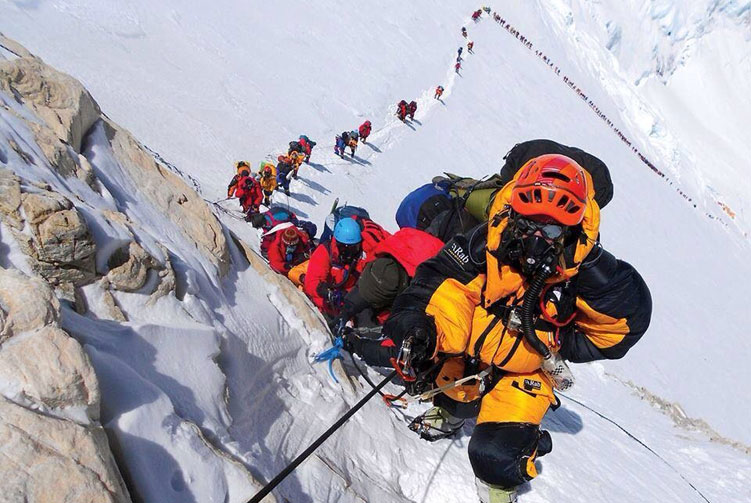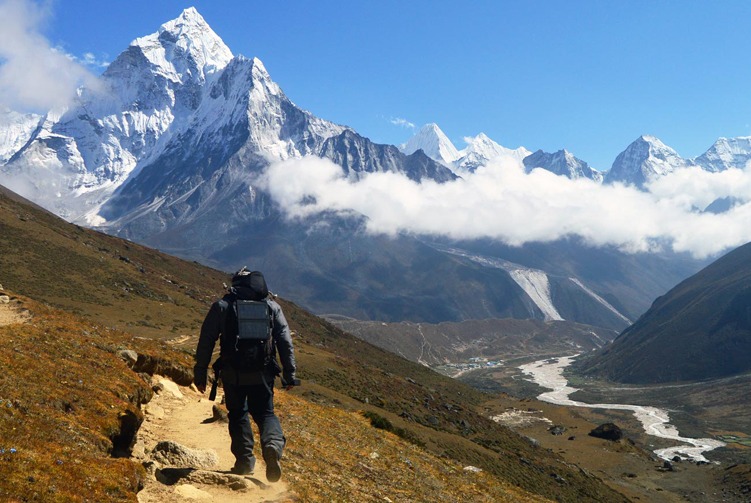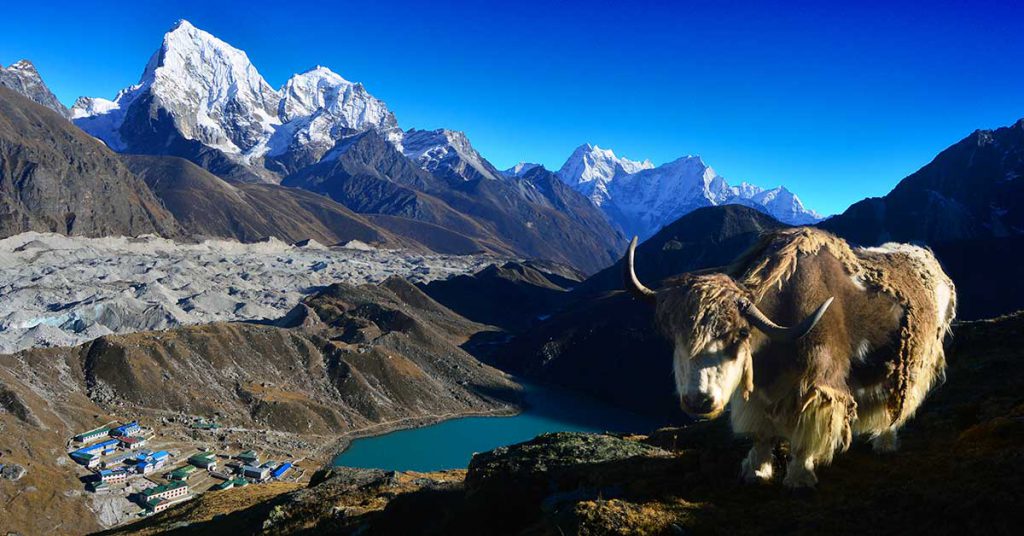Fixed Departure Date
| TRIP DATES | AVAILABILITY | PRICE | SPACE LEFT | |
|---|---|---|---|---|
| October 20, 2024 - November 23, 2024 | Guaranteed | $8,500 |
Available
|
|
| October 18, 2025 - November 21, 2025 | Guaranteed | $8,500 |
Available
|
Most mountaineers dream of reaching the summit of mount Everest during their lifetime. For many mountaineers a successful Everest expedition is the ultimate goal of climbing in the Nepals Himalaya. Everest expedtion via the South Face remain the most popular choice, as this route has the highest success rate.
Overview
A Mount Baruntse expedition is a challenging adventure in the Nepal Himalayas. Climbers typically start in Kathmandu, then fly to Lukla and trek to the village of Chukhung. From there, they continue to Baruntse Base Camp, where they acclimatize and prepare for the climb. The ascent involves navigating steep terrain, crossing glaciers, and dealing with high altitude. Experienced guides lead the way, ensuring safety. Once at the summit, climbers enjoy breathtaking views before descending back to base camp and eventually returning home. It’s an exciting but demanding journey that requires physical fitness, mountaineering skills, and determination.
Mount Baruntse is at the height of 7,129m. in between the lap of Everest and Makalu mountain. This mountain was first ascended first by Colin Todd and Geoff Harrow on 30 May 1954. They have climbed the mountain by the South -East Ridge. Since than many climbers have used this route and got succeeded. This mountain has also been becoming coveted day by day like the other Pumori, Ama Dablam as well as Everest too.
The south -East Ridge of Baruntse it is little bit difficult because of being straightforward hard ways to climb. There are hard sections of 50 Degree’s elevation with a prominent ice cliff to be climbed facing the risk of avalanche. The climbers have succeeded the mountain mostly in the spring season because of being the season the best to the climber safety. But also some climbers have reached on it’s top in the autumn season as well.
Trip Highlights
- Conquer steep slopes, icy terrain, and extreme altitudes, pushing your physical and mental limits.
- Enjoy breathtaking panoramic views of the Himalayan range from the summit and along the way.
- Interact with the Sherpa people and learn about their unique culture and traditions.
- Forge strong bonds with fellow climbers and Sherpa guides during the challenging journey.
- Develop resilience, determination, and mental strength through this extraordinary adventure.
- Create memories and stories that will last a lifetime, marked by your Baruntse Expedition.
Itinerary
Today is the day of your arrival in Kathmandu, Nepal. As soon as you come out of the Kathmandu airport, you will find our representative waiting for you in the waiting area right outside the arrival lounge. You will be warmly greeted and welcomed by the representative and led to the vehicle. Our vehicle will take you to the trip hotel, most of the time in Thamel, that is 20-30 minutes drive, depending upon traffic, from the airport.
Preparation, Briefings at Departments of tourism, Last minute shopping
The Trip Cost Includes
- Transportation Arrival & Departure; on domestic and international flights.
- Standard hotel accommodation in Kathmandu on B/B plan
- All Domestic flights charges.
- All Transportation service from starting and ending points of Baruntse Expedition trips.
- Climbing Sherpa guide for Baruntse Expedition.
- Baruntse Expeditions Group climbing gears like rope, ice bar etc.
- Everest National Park trekking permit.
- Permits for the Mount Baruntse Expedition.
- High altitude meal (Full board) while Trekking to Baruntse B.C and while Climbing.
- All the expenses & insurance of Liaison officer (Govt. of Nepal).
- Cook, support crew and porters with their equipments, daily wages, food & insurance etc.
- Camping & Kitchen equipment like base camp tents, dining tent with table and chair, kitchen tent with all utensil and toilet tent.
- High altitude tents and necessary gadgets like EPI gas and burner for high climb.
- Warm clothing, trek gear for nepali staff including porters
- Life & medical insurance for Nepali staff & Porters.
- Portable Altitude Chamber (PAC) & Gamow Bag along with the comprehensive First Aid Kit.
- Communication device like Satellite Phone & Willkie-Talkie in case of emergency.(USE PAY)
- Emergency Oxygen with regulator and mask while on Baruntse Expeditions.(USE PAY)
- Agency service charge.
- Ample farewell dinner with Nepali song & dance.
The Trip Cost Excludes
- International airfare and airport tax.
- Nepal entry visa fees.
- Medical and personal high risk insurance.
- Lunch & dinner in Kathmandu.
- Bar & Beverage Bills.
- Personal equipment & climbing gears.
- Emergency Rescue evacuation.
- Climbing Bonus for Lhotse base camp staffs, tips and personal nature expenses.
- Permit fees and customizetripom charge for Sat phone, communication gadget and commercial filming while on Lhotse expedition.
- Garbage Deposit USD 5,00.00 (Sharing of the total person) and Deposit fee will be not refunded if the clients (climber) don't take back their garbage to Kathmandu.
Fixed Departure Date
| TRIP DATES | AVAILABILITY | PRICE | SPACE LEFT | |
|---|---|---|---|---|
| October 20, 2024 - November 23, 2024 | Guaranteed | $8,500 |
Available
|
|
| October 18, 2025 - November 21, 2025 | Guaranteed | $8,500 |
Available
|
Frequently asked Questions
Baruntse Expedition refers to the journey to climb Mount Putha Hiunchuli , the world’s highest peak, standing at 7,167 meters above sea level.
Mount Putha Hiunchuli is situated in the Himalayas, on the border between Nepal and Tibet (China).
Climbing Putha Hiunchuli is extremely challenging due to its high altitude, severe weather conditions, and technical climbing requirements. It requires significant mountaineering skills, physical fitness, and mental resilience.
The entire expedition typically lasts around two months, including acclimatization, base camp setup, and the ascent. The actual climb to the summit can take a few weeks, depending on weather conditions.
The cost varies widely, ranging from $13000 to over $16000. Factors influencing cost include the expedition organizer, services provided, permits, equipment, and logistical support.
The primary climbing season is during spring (April to June) and, to a lesser extent, during the autumn season (September to November). Spring is considered the best time due to milder weather conditions.
Yes, climbers must obtain a permit from the respective government authorities, from Nepal. The permits are expensive and contribute to conservation efforts.
Dhaulagiri presents various dangers, including avalanches, crevasses, extreme weather, high-altitude sickness, The risks make it crucial for climbers to be experienced and well-prepared.
Thousands of climbers have reached the summit. However, the exact number changes each climbing season.
The death rate on Everest varies each year but has historically been around 1-2% of climbers. Causes include altitude sickness, avalanches, falls, and other mountaineering hazards.
Yes, Dhaulagiri expeditions have raised concerns about environmental impact, including waste and pollution. Organizations and climbers are increasingly focused on “Leave No Trace” practices.
Most climbers use supplemental oxygen above a certain altitude (usually above 26,000 feet or 8,000 meters) to cope with the thin air and reduce the risk of altitude sickness.
Climbing Dhaulagiri requires advanced mountaineering skills, physical fitness, and experience at high altitudes. Climbers often need to have successfully summited other peaks before attempting Dhaulagiri.
Acclimatization is a crucial process where climbers gradually expose themselves to higher altitudes to allow their bodies to adjust to reduced oxygen levels. This involves ascending to higher elevations and returning to lower altitudes for rest.
Essential equipment includes specialized mountaineering gear, high-altitude clothing, a down suit, crampons, ice axes, ropes, and supplemental oxygen. Proper gear is crucial for safety and survival.
There is no strict age limit, but climbers should be in excellent physical condition. Many expeditions have age restrictions, typically requiring climbers to be at least 18 years old.
Climbers spend only a short time at the summit, typically 15-30 minutes, due to the limited oxygen supply and harsh conditions. The descent is equally challenging and requires careful attention.
Communication at higher altitudes is challenging. Base camps are equipped with satellite phones and internet, but as climbers ascend, communication becomes limited. Some climbers use satellite phones or radios for emergencies.
Waste management is a significant concern. Climbers and expedition organizers are increasingly adopting responsible practices, such as carrying down their waste, including human waste, and participating in clean-up efforts.
Sherpas, the local guides and climbers, face significant risks during Everest expeditions. They are crucial to the success of climbs, often taking on roles like fixing ropes and carrying heavy loads through dangerous sections.
Organizations and climbers are working to minimize the environmental impact of Everest expeditions. This includes cleaning up litter, enforcing waste disposal regulations, and promoting sustainable practices.
While it is theoretically possible, attempting Everest independently is highly discouraged due to the technical challenges, risks, and the complex logistics involved. Most climbers join organized expeditions for safety and support.
Success rates vary each season but typically range from 50% to 70%. Factors influencing success include weather conditions, climber experience, and the effectiveness of expedition planning and execution.
The youngest person to summit Everest is Jordan Romero at 13 years old, and the oldest is Yuichiro Miura at 80 years old. These records can change, so it’s essential to check the latest information.
Weather on Everest can be extreme and unpredictable. Climbers need to navigate through windows of favorable weather for a safe ascent and descent. The jet stream and monsoon seasons can significantly impact climbing conditions.
Sherpas play a critical role as guides, support staff, and climbers. They are essential for fixing ropes, carrying supplies, and providing crucial knowledge about the mountain. Many climbers rely on Sherpas for a successful ascent.
Climbers undergo intense physical training, including cardiovascular workouts, strength training, and high-altitude simulation. They also practice technical climbing skills, such as ice and rock climbing, to prepare for Everest’s challenges.
Altitude sickness symptoms include headaches, nausea, dizziness, and fatigue. The primary treatment is to descend to a lower altitude. Oxygen and medications may be used, but descent is the most effective solution.
Climbers use supplemental oxygen to compensate for the reduced oxygen levels at high altitudes. Oxygen is carried in tanks and is crucial for preventing altitude sickness and ensuring the safety of climbers.
Rescue services are available, but they can be challenging due to the high altitude and extreme conditions. Helicopter rescues are limited at higher altitudes, and climbers must often rely on fellow climbers and Sherpas for assistance.
Staying overnight at the summit is highly discouraged due to the extreme conditions and limited resources. Climbers typically descend to lower camps after reaching the summit to ensure their safety.
The Hillary Step is a rocky outcrop near the summit that poses a technical climbing challenge. While it’s not the most dangerous part, climbers must navigate it carefully, especially during the crowded summit push.
Climbers use ladders to traverse crevasses in the Khumbu Icefall. This section requires careful navigation, and climbers must move quickly due to the ever-changing nature of the icefall.
Base camp doctors are crucial for assessing climbers’ health, managing altitude-related issues, and providing medical support. They play a key role in ensuring climbers are fit for the ascent.
Mental resilience is vital for Everest climbers. They undergo psychological training to cope with stress, isolation, and the mental demands of high-altitude mountaineering. Positive mindset and mental preparedness are essential.
Climate change has led to glacier retreat and changes in weather patterns on Everest. This can affect climbing conditions, increase the risk of avalanches, and impact the overall environment of the mountain.
Climbers need to obtain permits from the respective government authorities (Nepal or China). The process involves submitting necessary documents, adhering to regulations, and paying fees, which contribute to conservation efforts.
Climbers face sub-zero temperatures, especially at higher altitudes. They use specialized cold-weather gear, including insulated clothing, boots, and gloves, to protect themselves from frostbite and hypothermia.
Communication can be challenging due to the mountainous terrain. Climbers often use radio communication, satellite phones, or messaging devices. However, these can be affected by extreme weather and altitude.
Yaks and porters transport essential supplies, gear, and equipment from lower elevations to higher camps. They play a crucial role in supporting climbers by lightening their load and facilitating the logistics of the expedition.
Rest days and acclimatization rotations help mitigate fatigue. Climbers pace themselves, stay hydrated, and consume high-calorie meals. Proper acclimatization is crucial for building endurance and reducing the risk of exhaustion.
Climbers are encouraged to follow ethical practices, including minimizing environmental impact, respecting local culture, and practicing responsible tourism. This includes proper waste disposal, supporting local communities, and respecting sacred sites.
Emergency situations, such as medical issues or extreme weather events, require quick and coordinated responses. Expedition teams have emergency protocols in place, and communication with base camp is vital for swift assistance.

